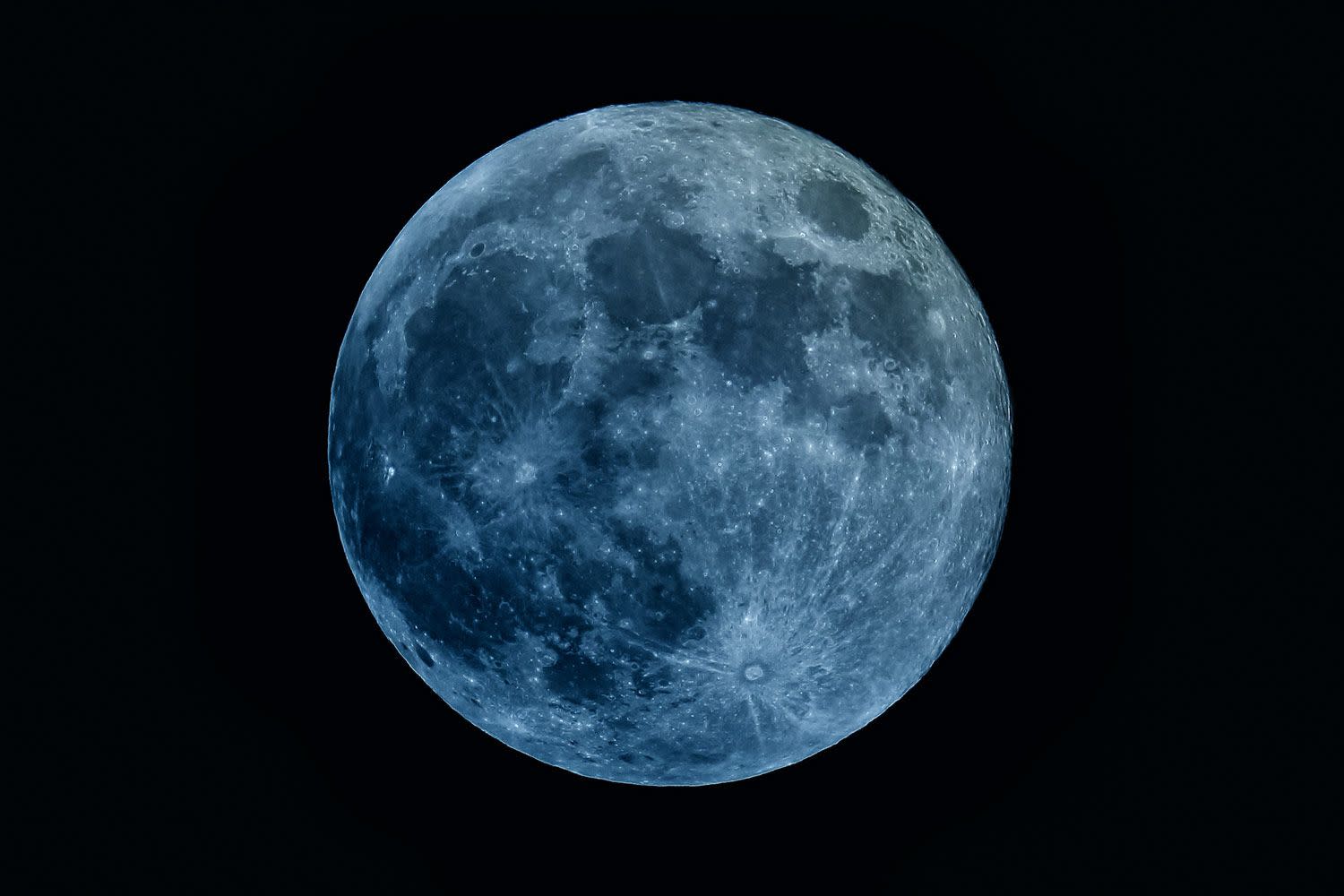As the name would suggest, the upcoming full moon is a rare occurrence that won't happen again until 2037 Getty Turn your eyes to the skies, because the full moon is sure to look bigger and brighter in . This month’s will be a rare super blue moon, which, as its name suggests, doesn’t happen very often. Blue moons in particular usually occur every two and a half years on average, hence the phrase “once in a blue moon.
” While the full moon will likely affect us astrologically, it will also be a beautiful spectacle. This is in large part due to the fact that this month’s full moon will be slightly closer to Earth during its orbit. Though it's dubbed a “blue moon,” the moon’s hue won’t be.

According to , the term blue moon was dubbed after “amateur astronomer” James High Pruett "incorrectly interpreted the term in an article he wrote in using the meaning we know today." Regardless, you won’t want to miss this month’s rare super blue moon as the next one isn’t slated to take place again until 2037! Read ahead for everything you need to know about how to see August’s rare super blue moon. Getty A supermoon occurs when the moon’s orbit is closest to earth at the same time it is full, according to .
This intensifies the look and size of the moon, notably making it 14 percent bigger and up to 30 percent brighter than a usual full moon. Supermoons occur three to four times a year, with noting that they “always appear consecutively.” As for the “blue moon” aspect, this refers to a full moon that occurs twice in a single month — a moon's cycle is approximately 29.
5 days, so it’s slightly shorter than an average calendar month, . Similar to supermoons, blue moons happen every two to three years. While the last super blue moon , the time between them is usually quite long.
As NASA notes, the time between super blue moons is “quite irregular” but in general, it’s usually every 10 years. Getty This month’s rare super blue moon peaks at 11:25 a.m.
PT on Aug. 19, 2024. Seeing that the full moon will be extra big and bright in the sky, it will be hard to miss, however, there are additional ways you can view it.
Notably, recommends having binoculars handy, which will help you see the finer details of the moon, including its “craters and large mountain ridges.” You can also gaze at the moon with a telescope, which will help you see “the cracks in the moon’s surface,” which are called rilles. Getty The next super blue moon won’t take place for another 13 years — after all, it is called “rare” for a reason! Thankfully, the next super blue moon will be a double feature as it takes place in January and March 2037.
For more People news, make sure to Read the original article on ..



















